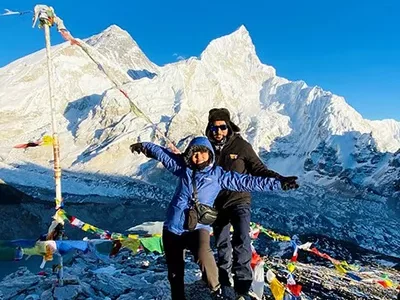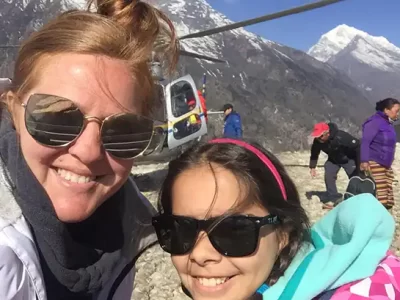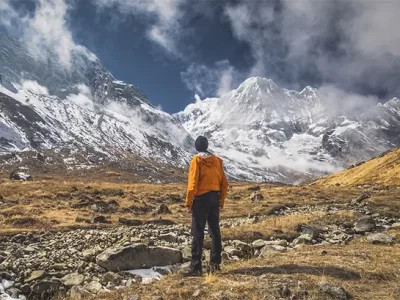Welcome to the Himalayan Kingdom of Beauty. As you embark on your journey in Nepal, the allure of hiking becomes irresistible. The country offers a plethora of base camp treks, each promising an adventure to remember. Today, let’s explore the details of the Everest Base Camp Trek vs Annapurna Base Camp Trek. Both these treks, the Everest Base Camp and Annapurna Base Camp, stand out as Nepal’s most popular base camp treks. They share similarities, yet distinct factors set them apart significantly.
Duration of the Trek
The duration of the Annapurna Base Camp (ABC) and Everest Base Camp (EBC) treks shows notable variation. Despite both taking more than a week to complete, the physical demands of the hikes parallel the slight difference in their timeframes.
The journey to Annapurna Base Camp spans 10 to 14 days, and the rugged terrain and high altitudes challenge it. External elements like weather can further extend the duration of this expedition.
Typically, reaching Everest Base Camp demands 10 to 15 days. Although the duration aligns closely with the ABC trek, factors such as trail conditions and climate can influence the exact timing—both treks climax at locations of considerable elevation.
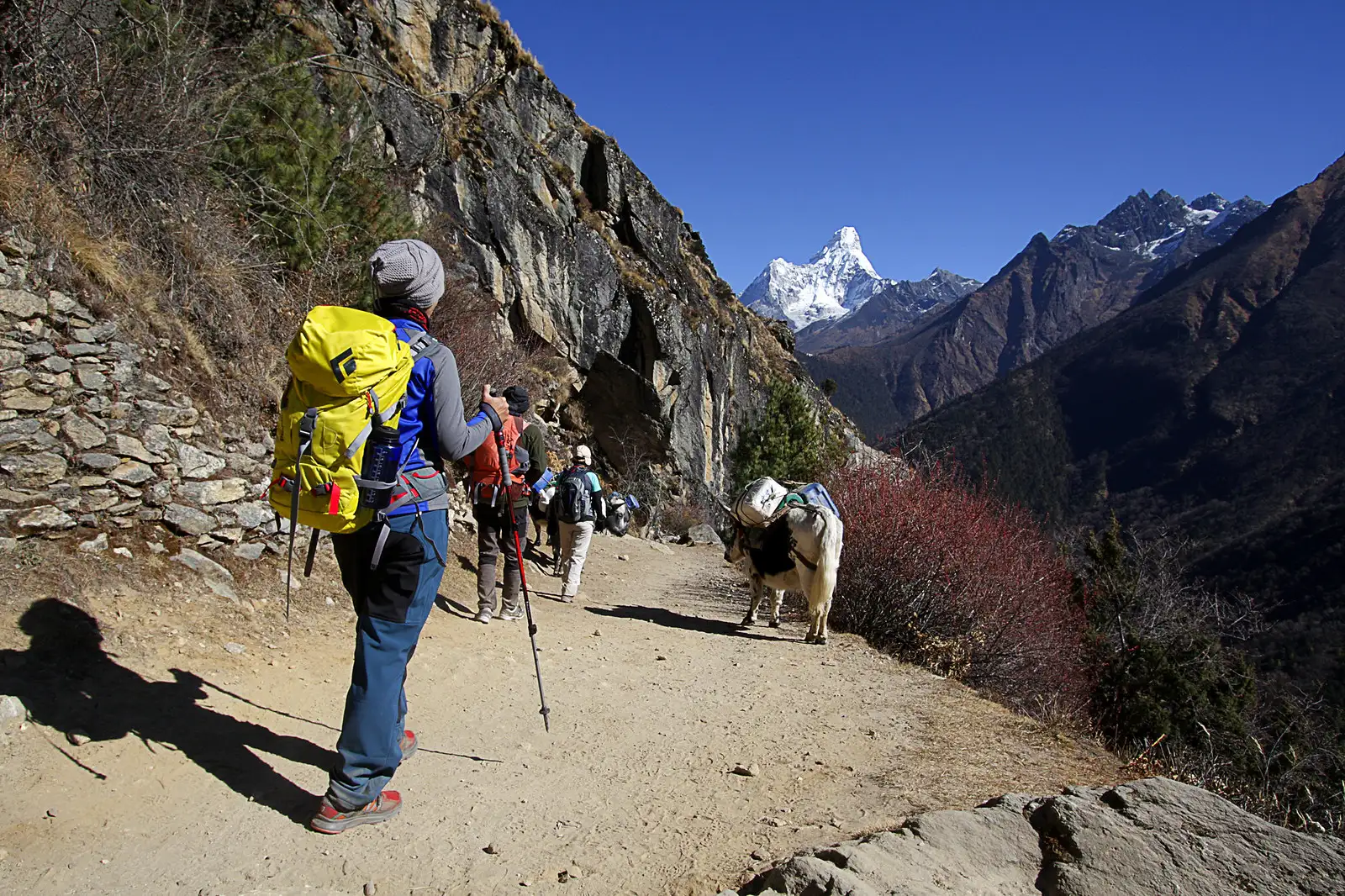
Hotel and lodge accommodations
Hotel and lodge accommodations in Annapurna Base Camp
Accommodations along both the Annapurna Base Camp (ABC) and Everest Base Camp (EBC) treks maintain a consistent level of quality. During your journey to ABC, you’ll find accommodations that meet your needs perfectly.
The lodging at ABC is impressive, offering spacious rooms and top-notch facilities. Amenities such as hot showers and delicious meals will exceed your expectations. You’ll also have continuous internet access throughout your stay.
Options for accommodation vary between shared and private rooms, with luxury hotels available in Ghandruk and surrounding areas. These hotels are a blend of comfort and luxury, providing additional services.
Expect well-ventilated rooms with beautiful views and comfortable settings. The trekking package typically includes the cost of your stay.
As the tourism sector in Nepal flourishes, the quality and number of hotel facilities continue to rise. At Annapurna Base Camp, the accommodations range from lavish hotels to cozy teahouses, all set in stunning landscapes.
These teahouses offer a quintessential Nepalese experience, complete with hearty local cuisine and traditional sleeping arrangements.
In summary, Annapurna Base Camp distinguishes itself with its diverse and exceptional lodging options, enhancing the overall trekking experience.
Hotel and lodge accommodations in Everest Base Camp
The experience of staying in the heart of Everest’s grandeur, with first-class accommodations, is unforgettable. The lodging facilities at Everest Base Camp are nothing short of remarkable.
You will be treated to amenities such as hot showers, spacious rooms, and sumptuous meals, ensuring a comfortable stay. Available accommodations in locations like Namche Bazaar, Phakding, Lukla, and Debouche come in various categories to suit different preferences.
Whether you opt for basic or luxurious accommodations, the choice is yours, with each category offering unique experiences. The mid-range accommodations often feature bars, live music, and exceptional cuisine, while the luxury segment caters to those seeking a wealthy environment.
The breathtaking views of Mount Everest enhance the lodging experience. Additionally, as you ascend, various teahouses provide a charming and authentic high-altitude stay.
In conclusion, Everest Base Camp offers exceptional lodging services, allowing you to relish the magnificence of the Everest region in comfort and style.
Everest Base Camp Trek
Everest Base Camp Trek with Helicopter Return
Annapurna Base Camp Trek
Everest Base Camp Trek vs Annapurna Base Camp Trek: How Much Does It Cost?
Everest Base Camp Trek Cost
Opting for an organized trek to Everest Base Camp covers all essentials, including food, accommodation, permits, transport, guides, porters, and miscellaneous fees, with prices typically ranging from $1,350 to $3,000. This package usually provides basic meals three times daily.
Typically, the cost lies between $1,400 and $1,500. Trekking independently might result in higher expenses. Experienced trekkers often know how to budget effectively, giving them the option to either go through a trekking agency or arrange for guides and porters independently.
The overall expenses are variable and manageable, ensuring a valuable investment in either of the base camp treks.
Annapurna Base Camp Trek Cost
Solo trekking may cost less or more than trekking with a company, depending on your choices and the season in which you trek.
Generally, the cost for the Annapurna Base Camp Trek falls between $1,100 and $1,400. Independent trekkers can plan and manage their budget according to their needs, with the overall pricing being quite fair.
While the pricing for both treks is in a similar range, the Everest Base Camp Trek tends to be pricier due to the airfare to Lukla and other specific services. However, the price gap between the two treks remains modest.
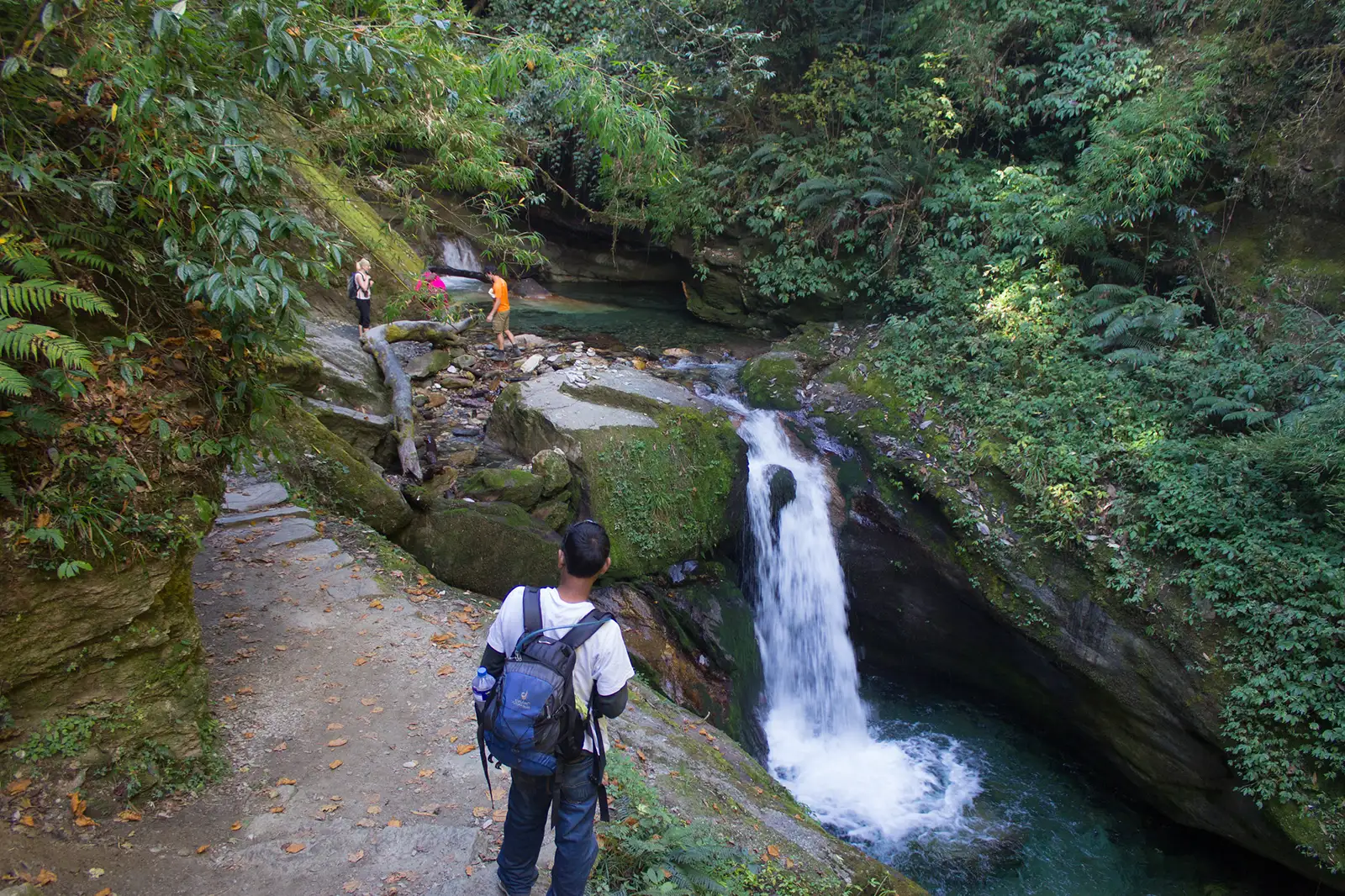
Trekking accessibility
Annapurna Base Camp
A variety of transport options facilitates access to Annapurna Base Camp. The bus journey from Kathmandu to Nayapul lasts approximately 8 hours, traversing several roads suitable for private and public vehicles, despite some being in poor condition.
Traveling to ABC is generally more budget-friendly compared to EBC, with an additional option to fly from Kathmandu to Pokhara. The trek officially starts from Nayapul, marking the beginning of the expedition, which is where roads and vehicles are quite accessible.
Everest Base Camp
Trekking to Everest Base Camp often involves a thrilling start: a flight from Kathmandu to Lukla, recognized for its challenging airport. The absence of roads to the trek’s commencement point necessitates this flight, and the journey unfolds from Lukla’s airstrip early in the day.
Road networks are insufficient for direct access to the base camp, and the trek’s initiation is heavily reliant on weather conditions and the region’s rugged terrain, making air travel to Lukla the primary route for this incredible trek.
Altitude
Reaching Kala Patthar, the highest point of the Everest Base Camp Trek means climbing to 5,550 meters, starting from Lukla at 2,860 meters. The high-altitude journey through the Everest region offers a unique, breathtaking experience.
In contrast, the Annapurna Base Camp Trek starts at an elevation of 800 meters and ascends to 4,200 meters. The EBC trek reaches a higher elevation compared to ABC, necessitating thorough preparation, including essential gear, medication, and a first-aid kit to manage altitude sickness and potential injuries.
Landscape
The landscape differences between the Annapurna and Everest Base Camp treks are significant. ABC is renowned for its verdant bamboo forests and rhododendron blooms, providing a lush, vibrant setting against the backdrop of snow-capped peaks.
Despite the high altitudes, the area around ABC maintains rich natural beauty. At the same time, EBC presents a contrasting environment of sparse vegetation at higher elevations, leading to stark, mountainous vistas interspersed with quaint villages, offering a unique trekking ambiance.
Itinerary Integrity
Both the Everest and Annapurna Base Camp treks offer unique challenges and experiences. Often, shortening each trek diminishes the overall experience.
You can condense expeditions to EBC to less than ten days, which includes a swift helicopter return, making it suitable for those with limited time but adequate trekking prowess. Conversely, the ABC trek can be accomplished in about 10 days by seasoned trekkers, with the full experience generally spanning 12 to 15 days, allowing for a more extended exploration and immersion in the natural beauty.
Everest Base Camp Trek vs Annapurna Base Camp Trek! Which trek is the most difficult to complete?
Generally, trekkers find the Annapurna Base Camp (ABC) trek easier than the Everest Base Camp (EBC) trek, as its lower altitude leads to denser forests and higher oxygen levels.
EBC presents a greater challenge with its higher elevations, commencing at nearly 2,500 meters above sea level, while ABC starts at 800 meters, peaking at 4,200 meters. In contrast, EBC soars to approximately 5,550 meters. Additionally, the harsh weather conditions at Everest add to the trek’s difficulty. Therefore, the journey to Everest Base Camp is deemed more strenuous than the Annapurna Base Camp trek.
The density of the crowd
The presence of crowds can be a deterrent for some trekkers, affecting the availability of accommodations and other services. Trekking in the off-season is a strategic choice to avoid large groups, offering a more serene experience.
Both EBC and ABC have become increasingly popular, particularly during the spring and autumn, attracting large numbers of trekkers. For those seeking a quieter trek, winter and summer present less crowded alternatives despite both treks attracting significant numbers of visitors.
Crowding can particularly impact the availability and comfort in the smaller teahouses. In order to guarantee a more pleasurable and comfortable experience, it is imperative to evaluate the weather and the best time for either base camp trek.
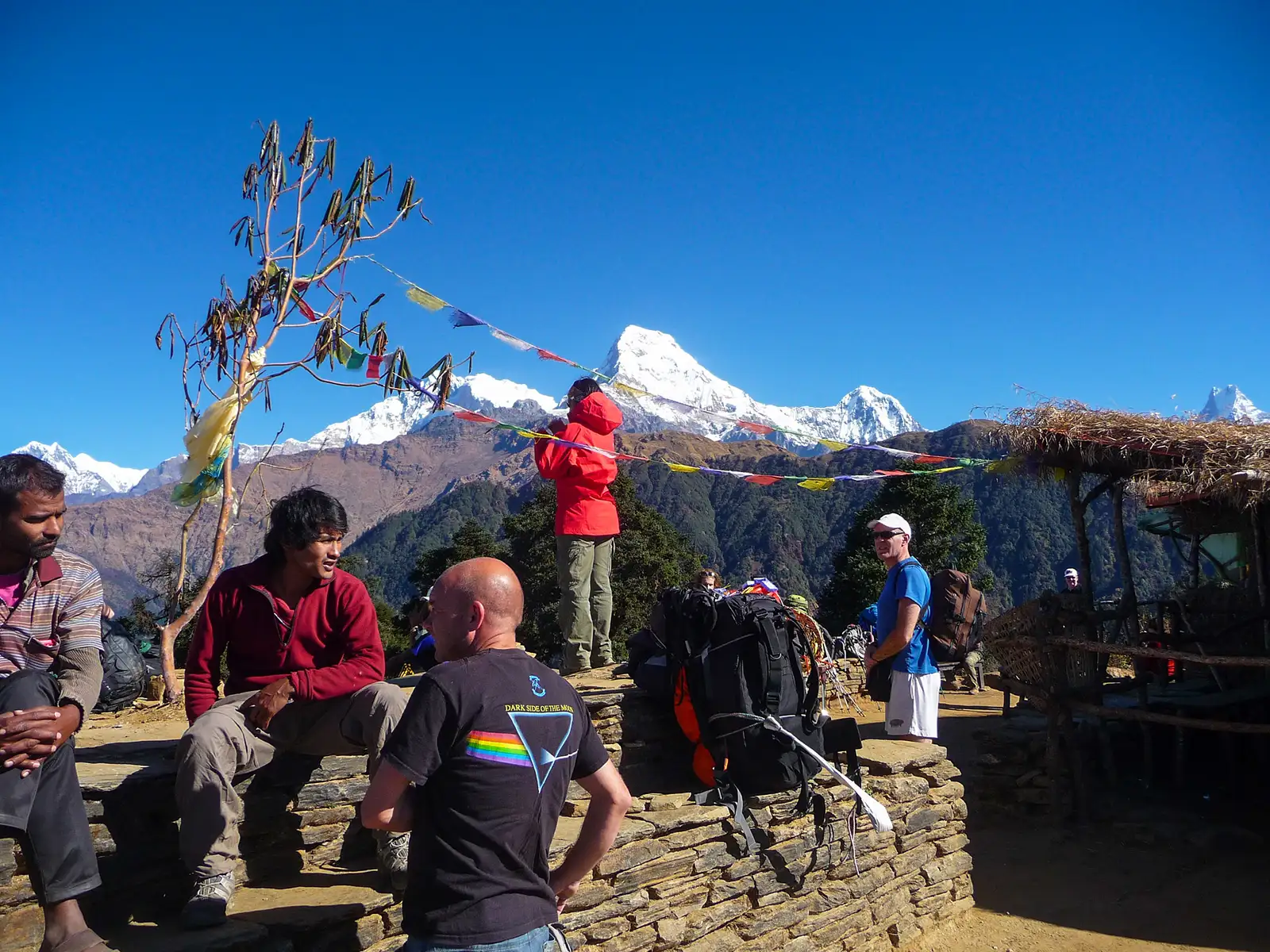
Communication Options While Trekking
When you start a trip, you will need to communicate effectively. You should get a local Nepali SIM card before you start your journey. Internet access is available from Namche Bazaar up to Kala Patthar on the Everest Base Camp (EBC) trek.
There are stretches where teahouses and lodges may need to be more extensive, making a Nepali SIM card invaluable for connectivity. It ensures steady internet access throughout the EBC trek.
On the Annapurna Base Camp (ABC) trek, there are a few locations that need connectivity, especially at higher altitudes. Lower regions generally offer better internet access.
Carrying a Nepali SIM card is essential on the ABC trek to maintain communication, particularly in areas with limited communication infrastructure. In case of emergencies or difficulties, your guide will be there to help you out.
Cultures and people from the area
The EBC and ABC treks traverse regions rich in cultural heritage, home to the Sherpa and Gurung communities, respectively. On the way to EBC, you’ll encounter monasteries and serene Sherpa villages, reflecting the Tibetan heritage.
The Sherpa communities in the high-altitude areas of the east celebrate Losar, a festival also observed by the Gurung people encountered on the ABC trek. The Sherpa and Gurung cultures both exhibit similar traditions and are renowned for their hospitality and warmth.
Guides and Porters
Guides and porters are indispensable to the trekking experience, aiding in navigation and carrying supplies. Their absence makes trekking significantly more challenging.
Hiring skilled guides and porters not only facilitates smoother trekking but also enhances communication throughout the journey. Therefore, these individuals play a pivotal role in ensuring a successful and enjoyable trek on both the ABC and EBC trails.

